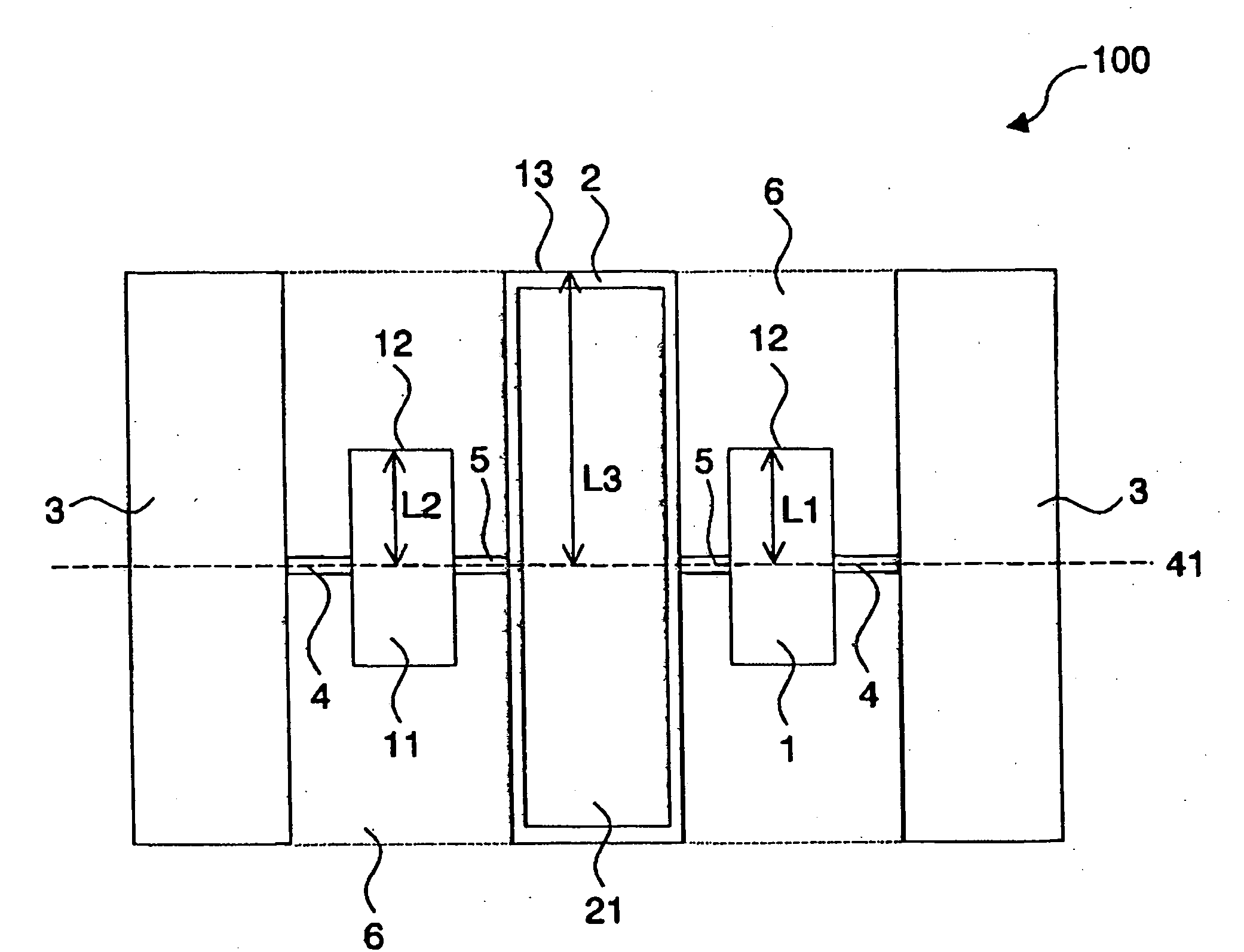Actuator
a technology of actuators and actuators, applied in the field of actuators, can solve the problems of increasing manufacturing costs, difficult to rotate the polygon mirror at a much higher speed, and difficult to miniaturize the size of the apparatus in which the polygon mirror is used,
- Summary
- Abstract
- Description
- Claims
- Application Information
AI Technical Summary
Benefits of technology
Problems solved by technology
Method used
Image
Examples
first embodiment
[0052] First, a first embodiment of the actuator according to the present invention will be described. FIG. 1 is a plan view which shows the first embodiment of the actuator according to the present invention. FIG. 2 is a cross-sectional view which shows the first embodiment of the actuator according to the present invention. FIG. 3 is a plan view which shows a counter substrate and electrodes of the first embodiment. FIG. 4 is a drawing which shows an example of the alternating voltage to be applied to the actuator shown in FIG. 1. FIG. 5 is a graph which shows the frequency of an alternating voltage applied and the resonance curves of a first mass portion and a second mass portion. In the following description, it is to be noted that the upper side, the lower side, the right side and the left side in FIGS. 1 and 3 will be referred to as the “upper side”, “lower side”, “right side” and the “left side”, respectively.
[0053] An actuator 100 shown in FIG. 1 includes a first mass porti...
second embodiment
[0079] Next, a second embodiment of the actuator according to the present invention will be described. FIG. 7 is a plan view which shows the second embodiment of the actuator according to the present invention. Hereinafter, an actuator 100A shown in FIG. 7 will be described by focusing on the difference between the first and second embodiments, and therefore a description of the same points will be omitted.
[0080] As shown in FIG. 7, the actuator 100A of this embodiment includes two pairs of first elastic connecting portions 4′ and two pairs of second elastic connecting portions 5′. The two pairs of first elastic connecting portions 4′ connect the first mass portions 1, 11 to the supporting portions 3, 3, respectively, so that each of the first mass portions 1, 11 can rotate with respect to the corresponding supporting portion 3. The two pairs of second elastic connecting portions 5′ connect the second mass portion 2 to the first mass portions 1, 11, respectively, so that the second...
third embodiment
[0082] Next, a third embodiment of the actuator according to the present invention will be described. FIG. 8 is a plan view which shows the third embodiment of the actuator according to the present invention. Hereinafter, an actuator 100B shown in FIG. 8 will be described by focusing on the difference between the first and third embodiments, and therefore a description of the same points will be omitted. The actuator 100B of this embodiment is driven by electromagnetic force (that is, by Lorentz force).
[0083] Specifically, as shown in FIG. 8, the actuator 100B includes four terminals 10 provided in the supporting portions 3, 3 through insulating films (not shown in FIG. 8), two coils 20 respectively provided on the surfaces of the first mass portions 1, 11 (that is, the surfaces of the first mass portions 1, 11 which do not face the counter substrate 6), a pair of permanent magnets 30, 30 provided on both sides of the first mass portions 1, 11 so that the first mass portions 1, 11 ...
PUM
 Login to View More
Login to View More Abstract
Description
Claims
Application Information
 Login to View More
Login to View More - R&D
- Intellectual Property
- Life Sciences
- Materials
- Tech Scout
- Unparalleled Data Quality
- Higher Quality Content
- 60% Fewer Hallucinations
Browse by: Latest US Patents, China's latest patents, Technical Efficacy Thesaurus, Application Domain, Technology Topic, Popular Technical Reports.
© 2025 PatSnap. All rights reserved.Legal|Privacy policy|Modern Slavery Act Transparency Statement|Sitemap|About US| Contact US: help@patsnap.com



